
TALAMANCAN INDIGENOUS
Pre-Columbian Costa Rica was a strong business bridge between the aboriginal peoples of North, the Olmecs, Mayas and Aztecs, and the ones of South, Chibchas of Colombia and Incas of Peru. Here the Mesoamerican and South American cultures merged, which brought valuable knowledge of mathematics and astronomy, religious beliefs, symbols, traditions and legends that culturally enriched the region.

The Talamancan mountain range is a huge natural barrier covered with humid tropical forest. It is the cradle of different indigenous ethnic groups, including the Bribri and Cabecar, the largest in the nation who still retain most of their cultural manifestations such as language, symbolism, beliefs, architecture, traditions and ancient crafts.
Many studies have considered Cabécares and Bribris as a single ethnicity. Their culture has strong Amazon influences, mainly reflected in the origin of the language, Chibcha, they believe in one god, Sibu (Sibö); they share the power structure and maintain a complex kinship system of matrilineal clans, where women play an important role in that membership of the clan being inherited by the mother, as well as the right to land.
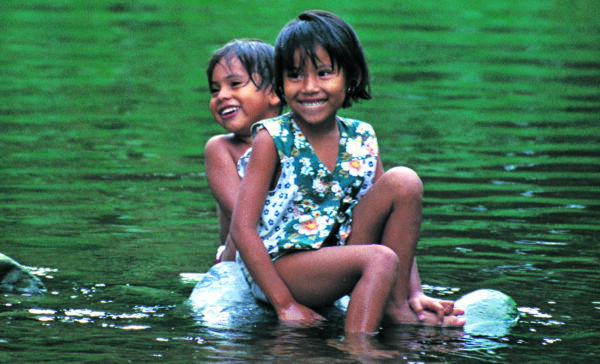
The forests and rivers of this region have always been the ideal habitat for Bribris and Cabécares, which provides abundant hunting, fishing and fertile soil to plant, enabling them to lead a self-sufficient economy based on the rational use of natural resources as well as a life in harmony with nature. Today’s agriculture is based on the production of plantain, cacao and to a lesser extent corn, beans, rice, cassava and peach palm ¨pejibaye¨. They raise cattle, pigs, horses and poultry according to their family needs.
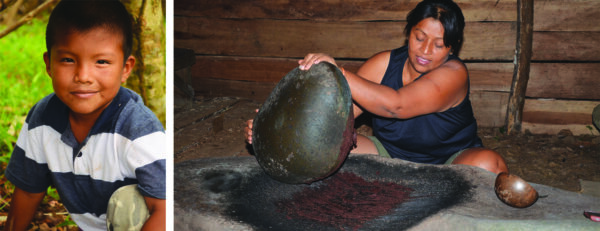
We owe to the indigenous of Talamanca the art of making tamales, typical national product made with corn-based pasta with vegetables and meat that is cooked wrapped in a banana leaf and the process of cacao so as to make chocolate. Their crafts for thousands of years have had daily use. They make rattan baskets, bags and backpacks made of ¨burio¨ and ¨pita¨, or pumpkins for transporting and storing of food and water, all decorated with vegetable dyes. Their bows and arrows are made of peach palm wood used for hunting and fishing.
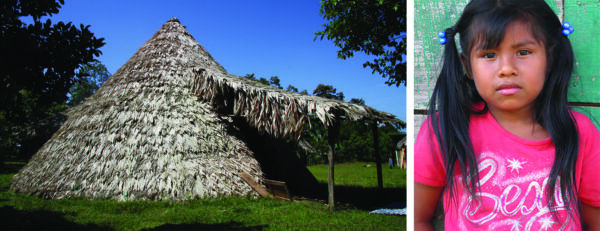
Among their cultural events they have a ceremonial dance, the “Sorbonne”, where men and women form a large circle moving to the rhythm marked by the feet, a symbol of solidarity and attachment to the land. It is usually danced after some community work is carried out, such as building a ranch or repairing a suspension bridge. It is accompanied by the “Chicha” which is a beverage produced by fermenting corn.
Today many indigenous people have been sheltered to the comforts of our times, but others still live in the mountains on ranches that are characterized by the use of organic materials in its construction, made of ¨chonta¨ and wood from their forests, with roofs of ¨suita¨ palm leaf tied with rattan and natural fibers. Normally you see the typical Talamancan home, with a conical structure, which reproduces the universe created by Sibu, their God.
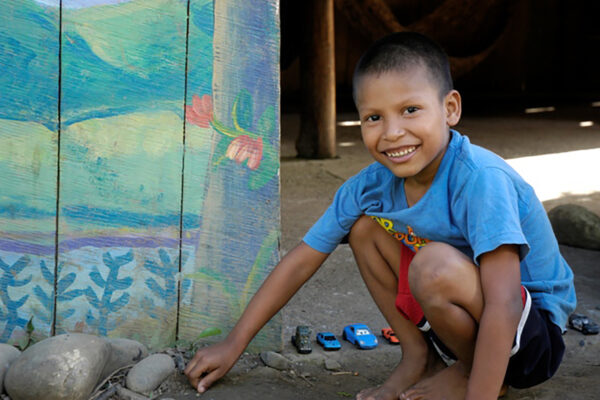
The Indigenous came from corn seeds (Distö) that Sibu threw from the top of the Namásul hill, on the Lari top, which germinated and gave rise to all the Talamancan (Wak) clans, where history, culture and ideology is handed down from generation to generation.
These indigenous peoples had their own power and organizational structure that gradually started disappearing during the last century, but still remains alive in the collective mind of the indigenous population. Next to Sibu, the creator of the Indigenous, is Sura his wife, the senior protective spirit. In the realm of power are the Usekorpa or Usekör, top political and religious leaders, big and powerful shamans, only representatives of Sibu-Sura. They are followed in importance by Brupa or Bru, called caciques, political and military leaders, they were paid tribute and also were the stewards of the town’s properties.
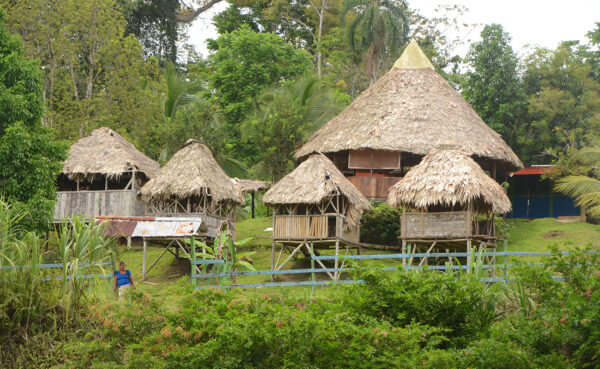
The elderly Tsokorpa, Sukia are the next in this hierarchy, being those who with the pass of the time have kept their history alive, their tradition and legends. They are responsible for transmitting the words of the great shaman, messages that are sung during ceremonies and parties. The Awapa, Awa or Sukia are wise healers, who treat their patients with a combination of healing plants, psychology and suggestion, where they use magic stones and chanting rituals invoking telluric energies for healing purposes. The Yeria, are warriors and hunters, brave defenders of their territories. Then you have the Kepra, who are the Indigenous people in general.
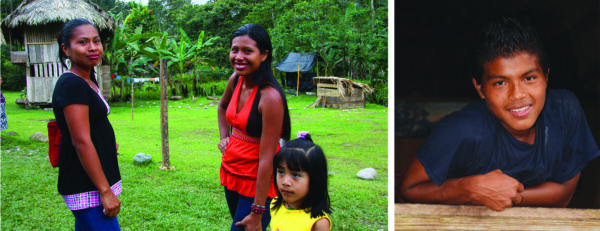
Throughout history Talamanca has witnessed many threats, struggles and heroic acts in order to stop the successive attempts to dominate and colonize. Continuous struggles with the Tariacas tribes from the Pacific, Zambos Miskito indians invasions, spanish conquest attempts, church’s evangelization or exploitation by foreign companies, are some of these failed attempts. After more than 500 years Talamanca has not been fully conquered.
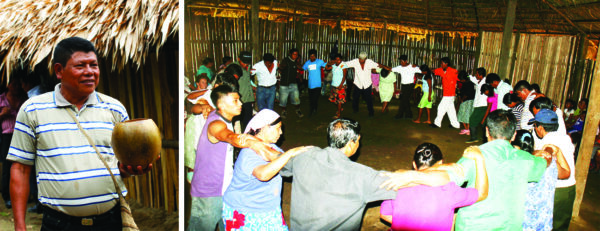
In 1977, the Talamanca Indigenous Reservations were created, under the Indian law n.6162. Among the most important indigenous communities you have the Bratsi (Bambú), Suretka, Shiroles, Amubri, Kachabri, Bajo Coen, Coroma, Boca Uren and Mojoncito, communities that each day are more accessible to tourism. In Uatsi you can visit Rancho Grande, cross a suspension bridge, visit the nearby Volio waterfalls, the bananas and cacao plantations, and buy traditional crafts or pure cacao prepared with primitive methods. The Indian Community, Kekoldi in Hone Creek, has a project for the breeding and conservation of the green iguana, which is in danger of extinction. The most adventurous walk for hours through the river banks, natural borders with Panama, and reach remote areas such as the community of Yorkin. There they provide hosting service, food and tours in the area, where civilization and development has not left its trace.
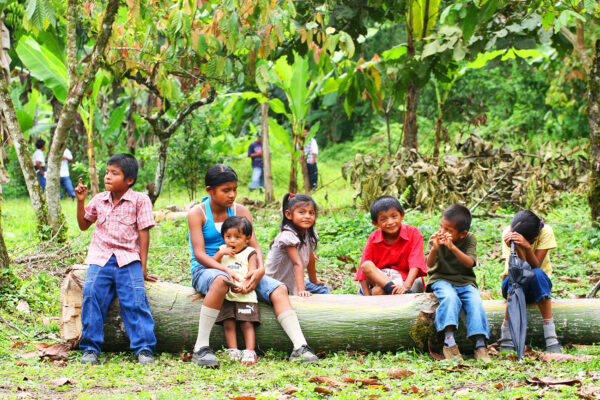
Undoubtedly in Talamanca, you will enjoy an unforgettable experience due to the serenity, peace and harmony its people transmit in a pure air environment. Dare to lose and immerse yourself in enchanted forests and ancestral culture.
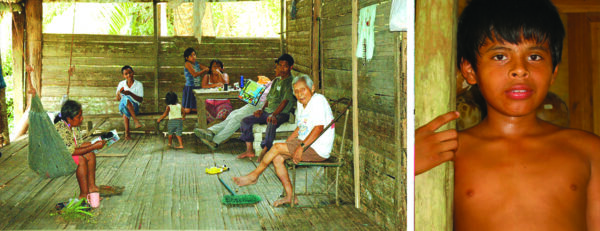

Fotos de Paco Salmerón y Sophie Andrieux
Texto de Juan carlos Lorite y Paco salmerón